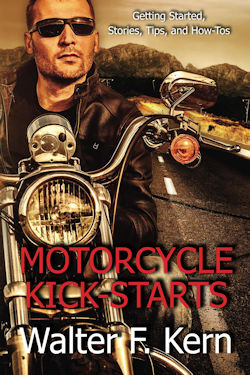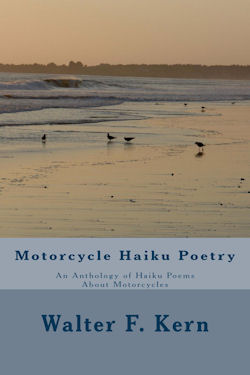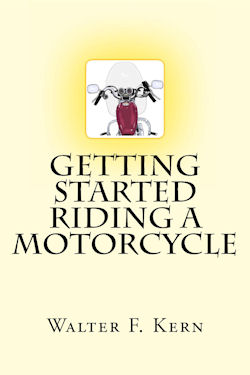Ride a Motorcycle in the Winter
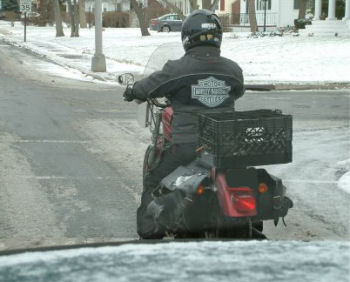 Even though I live in New Jersey USA where the winters can be harsh, I choose to continue riding my motorcycle throughout the winter season. Even though I live in New Jersey USA where the winters can be harsh, I choose to continue riding my motorcycle throughout the winter season.
After I started riding, I dreaded the winters. Then I found a way to keep riding. I joined the Polar Bear Grand Tour. This is a group of 500 riders who ride each Sunday in the winter to a different location in the NJ, NY, PA, DE area.
You have your own reason for wanting to continue to ride when it gets cold. However, there are some things you need to know if you are determined to ride your motorcycle in the winter ... and survive.
How do you do it?
There are always motorcycle riders who feel they are tough enough to ride in the winter by just wearing extra clothing. There may be some intrepid enough to get away with this but the majority of motorcycle riders need to take precautions both for their bikes and themselves.
- Prepare your motorcycle
- Prepare yourself
Prepare your motorcycle
- Get a windshield
Many think a windshield spoils the beauty of the bike and gets in the way of enjoying the wind in your hair. However, riding in 20 degree temperatures with severe wind chill factors may make you change your mind about getting that windshield. Take my advice and get a windshield.
- Make sure your battery is up to the task
Many motorcycle batteries won't last more than two years. Winter riding puts even more strain on a battery. Use a product like Battery Tender to keep it charged.
- Use proper oil
Usually 10W - 40 weight oil designed for motorcycles is sufficient.
- Check your coolant
If you have a liquid-cooled bike, be sure that the reading on the anti-freeze is sufficient for the temperatures you expect.
- Inspect your bike mechanically
Make sure the bike has been thoroughly inspected for any mechanical problems. There is nothing more frustrating than being stranded in the middle of nowhere in 20 degree temperatures because of a breakdown.
Prepare yourself
- Attitude
Riding a motorcycle in the winter can be a great experience. You are covered up much more than in the summer and better protected. Your overall movement is somewhat more restricted especially if you wear a full-faced helmet. Turning one's neck to see traffic on crossroads can be a bit of a challenge. People do not expect to see motorcycles in the winter so you have to be more careful to make sure that you are seen. If you do any skiing, you'll be familiar with dressing to keep warm and wearing somewhat constricting clothing. It's much the same getting yourself ready to ride in the winter. I have even seen motorcyclists arrive on their bikes at ski resorts.
- Weather and road conditions
Making a decision to ride in the winter requires that you understand the increased risks over summer riding. If you plan to travel any distance from home, check out the weather forecasts over the route you'll be taking. It may be clear at home but icy and snowy elsewhere on your route.
- Clothing
You need to cover your body and eliminate places where the cold air can easily enter. Some riders have been known to wear heavy clothing and seal up openings with duct tape. It's better to use modern fabrics designed to seal out the cold and retain body heat. You can wear ski pants but there are products made specifically for motorcyclists.
- Electrics
Many riders just dress in layers much as a skier does. There comes a time when most will get tired of being so cold and opt for some electric clothing. There are many products out there. Gerbing and Widder are the major makers of electric apparel. (Widder left the market in 2009.) One usually uses an electric vest and electric gloves. The vest is worn under your jacket. The vest and gloves are interconnected with wires that connect to a thermostat that you usually place in your pocket. One end of the thermostat goes to a dedicated connector that leads to the battery. You do look a bit like the Frankenstein monster with all those cables attached but the upside is that you are toasty warm. You'll find that you start out with full equipment and then gradually start shutting down the electrics as the outside temperature rises. At the end of the day when the temperatures start dropping again, the thermostat is turned up.
What do I wear?
I wear a full-face Nolan N102 helmet. I also wear a thin silk balaclava over my head to keep my head protected from the elements. I don either leather chaps by California Creations Leathers or electric heated pants by Gerbing, Hypertex Kilimanjaro jacket by First Gear (or leather jacket by Hein Gericke), full length leather boots, and one or two pair of full length tube socks. (There are also some special riding socks you can buy for the winter.) I also wear an electric vest and gloves by Gerbing with an optional pair of electric socks, also by Gerbing. I ride with a T-shirt covered with a turtleneck sweatshirt. My jackets have zip-in or snap-in liners for extra warmth. In extreme low temperatures, I'll wear long silk underwear.
Winter motorcycle riding can be fun and safe. Just make sure that both you and your motorcycle are prepared.
Picture ©2006 Mike Cilenti
|
|
| |
| |
|
|
|
Click Picture for Walter F. Kern's
Kindle, Paperback, and Audible
Books
|
More about motorcycles
|
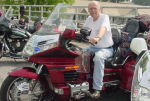

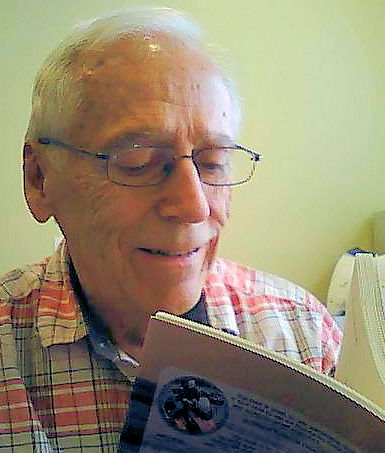

 Even though I live in New Jersey USA where the winters can be harsh, I choose to continue riding my motorcycle throughout the winter season.
Even though I live in New Jersey USA where the winters can be harsh, I choose to continue riding my motorcycle throughout the winter season.
